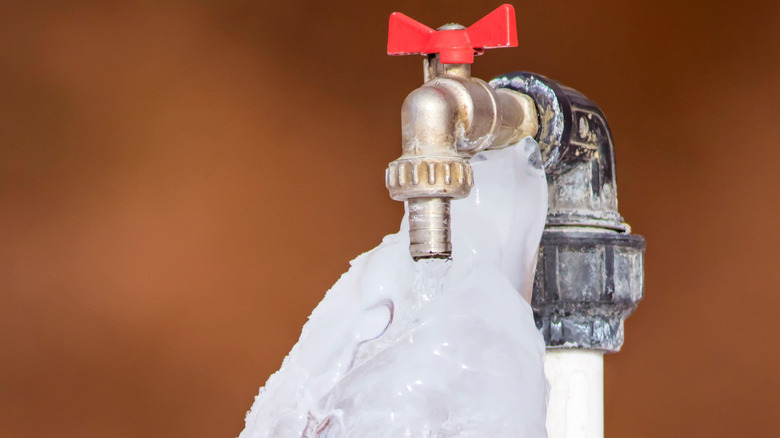How do you really feel when it comes to 6 Ways to Prevent Frozen Pipes?

Winter can ruin your plumbing, especially by freezing pipes. Here's how to stop it from occurring and what to do if it does.
Intro
As temperatures decline, the danger of frozen pipelines increases, possibly leading to expensive repairs and water damage. Comprehending just how to prevent frozen pipelines is crucial for homeowners in chilly environments.
Understanding Frozen Pipelines
What creates pipelines to ice up?
Pipelines ice up when revealed to temperature levels listed below 32 ° F (0 ° C) for expanded durations. As water inside the pipes freezes, it broadens, putting pressure on the pipeline walls and potentially causing them to burst.
Threats and problems
Frozen pipes can lead to water system interruptions, home damage, and pricey repair services. Ruptured pipelines can flood homes and cause considerable structural damages.
Indications of Frozen Pipes
Recognizing frozen pipelines early can avoid them from bursting.
Just how to identify icy pipelines
Look for reduced water flow from faucets, uncommon smells or noises from pipelines, and visible frost on subjected pipelines.
Avoidance Tips
Protecting prone pipelines
Cover pipelines in insulation sleeves or use warm tape to secure them from freezing temperature levels. Concentrate on pipelines in unheated or external areas of the home.
Home heating techniques
Keep indoor areas appropriately heated up, specifically locations with plumbing. Open cabinet doors to allow warm air to distribute around pipelines under sinks.
Securing Outdoor Plumbing
Garden hose pipes and outdoor faucets
Detach and drain garden hose pipes before wintertime. Mount frost-proof spigots or cover exterior taps with insulated caps.
What to Do If Your Pipes Freeze
Immediate activities to take
If you believe frozen pipelines, keep faucets open up to alleviate stress as the ice melts. Use a hairdryer or towels taken in hot water to thaw pipes gradually.
Long-Term Solutions
Structural modifications
Consider rerouting pipelines far from outside walls or unheated areas. Add extra insulation to attics, cellars, and crawl spaces.
Updating insulation
Purchase top quality insulation for pipes, attics, and wall surfaces. Correct insulation aids keep regular temperature levels and lowers the threat of icy pipes.
Final thought
Stopping frozen pipelines calls for proactive measures and quick feedbacks. By recognizing the reasons, signs, and safety nets, property owners can protect their plumbing throughout cold weather.
5 Ways to Prevent Frozen Pipes
Drain Outdoor Faucets and Disconnect Hoses
First, close the shut-off valve that controls the flow of water in the pipe to your outdoor faucet. Then, head outside to disconnect and drain your hose and open the outdoor faucet to allow the water to completely drain out of the line. Turn off the faucet when done. Finally, head back to the shut-off valve and drain the remaining water inside the pipe into a bucket or container. Additionally, if you have a home irrigation system, you should consider hiring an expert to clear the system of water each year.
Insulate Pipes
One of the best and most cost-effective methods for preventing frozen water pipes is to wrap your pipes with insulation. This is especially important for areas in your home that aren’t exposed to heat, such as an attic. We suggest using foam sleeves, which can typically be found at your local hardware store.
Keep Heat Running at 65
Your pipes are located inside your walls, and the temperature there is much colder than the rest of the house. To prevent your pipes from freezing, The Insurance Information Institute suggests that you keep your home heated to at least 65 degrees, even when traveling. You may want to invest in smart devices that can keep an eye on the temperature in your home while you’re away.
Leave Water Dripping
Moving water — even a small trickle — can prevent ice from forming inside your pipes. When freezing temps are imminent, start a drip of water from all faucets that serve exposed pipes. Leaving a few faucets running will also help relieve pressure inside the pipes and help prevent a rupture if the water inside freezes.
Open Cupboard Doors
Warm your kitchen and bathroom pipes by opening cupboards and vanities. You should also leave your interior doors ajar to help warm air circulate evenly throughout your home.

I ran across that blog posting on How to Prevent Your Pipes From Freezing when doing a lookup on the internet. Sharing is caring. You won't know, you will be doing someone a favor. Thank you for your time invested reading it.
Suggested Site